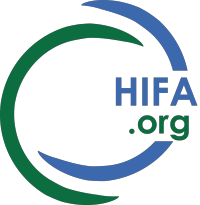This systematic review concludes: 'Few COVID-19 CPGs met National Academy of Medicine standards for trustworthy guidelines. Approaches that prioritize engagement of a methodologist and multidisciplinary collaborators from at least 2 WHO regions may lead to the production of fewer, high-quality CPGs that are poised for updates as new evidence emerges.'
CITATION:
December 10, 2021
Adherence of Clinical Practice Guidelines for Pharmacologic Treatments of Hospitalized Patients With COVID-19 to Trustworthy Standard: A Systematic Review. Karen E. A. Burns et aol. JAMA Netw Open. 2021;4(12):e2136263. doi:10.1001/jamanetworkopen.2021.36263
https://jamanetwork.com/journals/jamanetworkopen/fullarticle/2787001
KEY POINTS
Question Do clinical practice guidelines (CPGs) that report on pharmacologic treatments of hospitalized patients with COVID-19 meet the National Academy of Medicine standards for trustworthiness?
Findings In this systematic review of 32 CPGs of predominantly low quality, few reported funding sources or conflicts of interest, included a methodologist, described a search strategy or study selection process, or synthesized evidence. Although 14 CPGs (43.8%) made recommendations or suggestions for or against treatments, they infrequently rated the confidence in the quality of the evidence (6 [18.8%]), described potential benefits and harms (6 [18.8%]), or graded the strength of recommendations (5 [15.6%]).
Meaning The findings of this study suggest that few COVID-19 CPGs meet National Academy of Medicine standards for trustworthy guidelines.
SELECTED EXTRACTS
Of the 32 included CPGs, 3 (9.4%) reported on pharmacologic treatments for critically ill patients specifically, and the remainder reported on treatments for hospitalized patients with COVID-19. Fifteen CPGs (46.9%) were international and 17 (53.1%) were national. Most CPGs (25 [78.1%]) had sponsorship from 1 or more national societies, and few CPGs (3 [9.4%])14,23,34 had sponsorship from government, nongovernment, or not-for-profit agencies (4 [12.5%]). Seven CPGs (21.9%) explicitly reported their funding sources. Guidelines predominantly included authors from a single WHO region (20 [62.5%]) and mostly emanated from America or Europe (Table 1). Overall, few CPGs met most of the NAM standards for trustworthiness as assessed by the NEATS instrument.
COMMENT (NPW): This is an indictment of clinical practice guidelines. It is especially worrying that international CPGs produced in North America and Europe are not demonstrating high quality. The rest of the world often relies on such guidelines, so those producing international guidelines *must* use the highest possible standards. It is also a concern that only one-quarter of the guidelines explicitly reported their funding sources. Surely this should be mandatory, especially for international guidelines?
Neil Pakenham-Walsh, HIFA Coordinator, neil@hifa.org www.hifa.org

